- Home
- Penelope Lively
Next to Nature, Art Page 2
Next to Nature, Art Read online
Page 2
Elegance is, now, at so many removes as to seem not so much irretrievable as barely to be imagined. In the Common Room – once the drawing room – hangs an oil-painting of the house in its hey-day, spruce and sparkling in a landscape clean as a whistle, the trees and grass manicured, the parterre precise as an architectural diagram. Indeed, there is something diagrammatic about the whole painting, not least the bewigged and beribboned figures parading in the foreground, doll-like men and women impossible to think of as flesh and blood. Thus, too, the house’s own previous persona seems fictional, a mythical thing from the pages of a book, its present blurred and muted state far more real and apposite.
In the painting, the houses and park appear as a contrived and ordered island amid the green ocean of the countryside. In contrast, today, the shaggy woodland of Kent’s landscaped grounds is an unexpected tumult amongst the disciplined squares and oblongs of agricultural Warwickshire. Many of the trees, of course, have far outgrown the intended scale; elsewhere undergrowth and copses have blunted the original lay-out; the serpentine “rill” has all but vanished in thickets of unquenchable rhododendron. The whole place appears to be held in check only by the estate wall: a disorderly raffish presence alongside the innocent council houses and bungalows displaying their washing, greenhouses and prams where village and the entrance to Framleigh Park meet at the road.
In the same way, the inside of the house has an atmosphere not so much of graceful decay as an insensitivity to change, a kind of deafness and blindness to the world that saddles it now with peeling Edwardian wallpapers, thirties lino shivered into a spiderweb of cracks, wheezing pipes, clanking sanitation and a pervasive smell of damp. Since Toby, when up against it, has sold off most of the remaining paintings and the better pieces of furniture, the rooms are furnished with a combination of Edwardian and thirties stuff, giving way to Habitat in the “visitors’ ” bedrooms and an element of ethnic cushions, rugs and covers introduced lately by Paula. One of Paula’s own pieces, a huge appliqué-work picture of Adam and Eve in brilliant colours hangs above the (original) marble fireplace in the Common Room. The serpent, in puce nylon, coils round the trunk of a corduroy tree from which hang multi-coloured gingham apples. Some more of Paula’s work, from her corrugated iron period, is in the hall, occupying the marble niches. Outside, at the apex of the woodland ride and upon the plinth where stood originally the Apollo that Toby’s father was obliged to part with at an awkward time in the thirties, is her “Introspective Woman”, an abstract sculpture of welded bicycle frames and silver-sprayed nylon fruit netting.
This, then, is the present state of Framleigh, and it is amid this uneasy confusion of social and aesthetic intent that the eleven course members sit down to their first meal, in what was the dining room and is now the refectory. They sit upon long benches at a long table, with Paula, Toby, Greg, Nick and Bob interspersed among them, since togetherness is the ethic of Framleigh. The meal is cooked and dealt out by the two Filipino girls who comprise the Framleigh domestic staff. They are paid subsistence wages bolstered in theory by English lessons given by Paula or Greg when either can find the time or the inclination. The Filipino girls, did they but know it, are perhaps the only element of the place fair and square within the Framleigh tradition. They even sleep in the old servants’ garrets.
At the far end of the table, out of earshot of any of the Framleigh contingent, the dentist’s receptionist says to Mary Chambers, sotto voce, “What I don’t quite understand is, are Paula and Toby married? I mean, since you aren’t told any surnames.”
“The little boy,” offers the red-haired teacher opposite, “is hers. There’s a resemblance.”
“But is he theirs?”
No one can solve this. Mary Chambers, herself mother of three, has been perturbed, earlier, to come upon Jason in the garden hacking at twigs with a penknife of evidently wicked efficiency. No six year old of hers would be let loose with a thing like that. Since criticism is clearly out of place, she confined herself to a demonstration of techniques least likely to end in dismemberment. Down the table, Toby is leaning across to talk beguilingly to Sue, the pretty fair girl from Coventry, who looks gratifyingly beguiled. Paula, in a long dress of what appears to be tapestry, is in earnest discussion with Keith Harrap. Bob, the burly northern potter, is holding forth at the far end, and has his neighbours in stitches. He is a big man, a bear of a man, with muscled arms at which the girls glance and a badger-beard beneath sharp friendly brown eyes. He yarns away, a professional Yorkshireman, and his neighbours beam and giggle, bewitched. Nick is staring at Toby, and looks worried. Greg helps the Filipinos to dish out goulash.
All this watched by Mary Chambers, a quiet woman more given to observation than to participation. She is small, and of no particular colouring, and has one of those faces that somehow fail to lodge in the memory; others can never quite recall who she is. She on the other hand tends to remember people only too well. She is, at the moment, noting the way in which the Framleigh people – Toby and Paula and Greg and Bob; Nick, somehow, does not seem quite to fit in with the others – are different from the course people. They are in some way brighter and louder and more certain. Of course, they are at home and the others are not and are, as yet, on their best behaviour, but even so there appears to be some generic difference. She wonders if it is to do with being artists. Admittedly, some of it is to do with using rather strong language (Paula) and having a rich northern accent (Bob) and being American (Greg) or the owner of a large and old if unkempt house (Toby); but it is also to do with appearing not to care or even be interested in what other people think of you and wearing clothes that are superficially like the clothes everyone else is wearing but also subtly not, and talking to others in a way that is perfectly agreeable and yet somehow makes it clear that there are certain distinctions.
Mary is attending the course at the urging of her husband; she has always done a bit of painting and drawing, and he thinks she should do more. She, on the other hand, is feeling a bit guilty about the expense: they need a new washing-machine, and there is Jane’s school trip to France to be thought of. She remembers these things while listening to the conversation around her. The dentist’s receptionist continues to discuss their hosts with the red-haired teacher.
“She’s very stylish, isn’t she? I mean, somehow without trying.” They observe, over the goulash, Paula.
“I mean, you’d kind of know, looking at her, that she was somebody interesting. That’s true of all of them.”
“Bob’s ever so nice, isn’t he?” says the teacher. “I think I’ll do the potting tomorrow.”
The dentist’s receptionist, who is called Jean Simpson, goes on eyeing Paula while she describes other course centres she has attended. She is an emphatic woman of forty or so and would appear to be something of a connoisseur of such places. She and her husband, she explains, tend to go their own way over hobbies – “But don’t get me wrong, everything’s fine otherwise” – and she likes a little break on her own from time to time. With an activity of some kind. She tells of a place she went to last year at which you learned to print, on a hand-press. You could print a little book, if you stayed a week. Of course, she says, that wasn’t art, really, and the people who ran it weren’t artists, exactly, not like here – I mean, they just knew how to do something well. Hertfordshire, it was, and they didn’t have the surroundings like they have here, but there were some nice types on the course. “What I like here so far,” she goes on, “is the way they’re a community. Like a family, only not.”
“Families …” says the teacher, with a sigh. “Don’t give me any of that …” She is having husband trouble and hopes, among other things, to find someone nice to talk to during the weekend.
“There’s something kind of different about them, here,” continues Jean Simpson. “Being here’s not like being in the ordinary world.”
“Right,” agrees the teacher, thinking still and with malevolence of her husband (presently, she hopes, se
arching the fridge for the supper she has not prepared).
At this point Toby rises to suggest an adjournment to the Common Room for coffee and “a little introduction to Framleigh I like to inflict on people at the beginning of a course”. The visitors, obedient and sympathetic, follow him from the refectory.
Toby stands, as he has stood so many times before, beside the marble fireplace and slightly to the right of Adam in Paula’s appliqué picture. He allows the audience to settle, clutching its mugs of Nescafé, and runs a hand across his eyes – the quick, nervous gesture typical of his movements. He would much rather, it implies, not be doing this, but since needs must …
“Hello, everybody. Well, you’ve met us all now, and you’ve seen the place. I just want to give you some idea of what Framleigh’s about. The main thing is for you all to feel relaxed while you’re here – relaxed and liberated. You’re going to work and play and do your own thing and we’re here – Paula and I and everyone else – to give you all the help you need and bring you out of yourselves. Paula and I are around the studios all day. There’ll be a life-class for anyone who wants it – lino-cutting, etching – potting with Bob in the old barn. Paula’s sculpture class in the stables. Afternoons are free for you to do what you like. I take a Nature Trail round the park tomorrow. Wednesday we’ve got something a bit special laid on. Greg’s putting on a poetry workshop for anyone who’d like to drop in. Sunday night by which time we all feel we’ve known each other a hundred years we usually have a bit of a party. Bring your own bottle. O.K.? Anything you want to know – just nobble one of us.”
He pauses and smiles, a warm, inviting smile. “And now, I don’t want to be a bore but I’d just like to at this point say a word or two about what I call the Framleigh Ideal.” He pauses again, the smile replaced by a responsible, serious look – almost a burdened look. “The thing is, Framleigh’s been in my family since it was built and I don’t need to tell you it’s bloody difficult to keep up a place like this. Vintage cars and lions just wouldn’t be my scene, frankly, even if we were in that league. Nor the dead hand of the National Trust; I don’t go for museums. Because the point is that I see Framleigh as having a valuable up-to-the-minute today kind of potential as just this: a place where people can get away from ordinary life and find out what’s going on inside their own heads. A sort of island – a haven, to be corny – in the ghastly modern world. A place where people can find out about their own creativity and their potential and see where they’re going. All of us – you and others who come here and Paula and Greg and Nick and Bob and myself. O.K. – so we’re artists and you’re not, at least not professional ones. But that’s not the point. The point is that we all need somewhere and something like Framleigh – a release, a place where we can really be ourselves, where we can forget about what we’ve got to do and do what we want to do. Be what we want to be. So that’s what I’ve tried to make Framleigh into. A sanctuary. A creative sanctuary. There! Lecture over! Paula – are you laying on another cup of coffee?”
Later, much later, Framleigh falls quiet. Lights are put out. The Filipino girls, whacked, go straight to sleep. Sue lies in the Habitat bed in Room Five in the visitors’ wing and realizes that it is Toby she is in love with and not, as she had at first thought, Greg. Keith Harrap strips his Dulwich semi, in the mind’s eye, and re-furnishes it with Paula’s appliqué pictures and fun-sculptures. He also strips his wife and re-dresses her in Paula’s patchwork skirt and T-shirt worn without bra.
Greg, in the old gun-room that serves now as telephone room, makes two calls to London and one to Boston.
Bob walks back from the village pub in the dark, a trifle unsteadily. Nick reads a thriller in bed and frets.
Jason sleeps. Blamelessly.
Outside, the tawny owl that will feature in Toby’s Nature Trail is committing an atrocity upon a field-mouse. Large black slugs come out of cracks in the terrace walls and eat the new young shoots of anything in their path. Further away, Kent’s woodland ride is loud with rustlings and screamings. The bulrushes by the stream are full of toads in sexual congress. A cow has a calf in the beech plantation.
Paula, in the largest of the rooms in the wing now reserved to Framleigh faculty, says to Toby “I hear you’re having it off with Nick”.
“Ah. You do, do you? Little pitchers, I suppose?”
“Little pitchers, as you say.”
“I imagine,” says Toby thoughtfully, “that we do the most ghastly things to children.” He gets up from the end of the bed, where he has been sitting. “I’m going to have a bath. Incidentally I think we ought to make a rule about no baths for course members after ten.”
“You don’t love me,” says Paula, without emotion.
“No,” he agrees. “I did once,” he adds, courteously.
Mary Chambers puts out her light and has a conversation in her head with her husband, to whom she tells most things. It is all very free and easy here, she says. Toby who owns it is not at all what you might expect – people say he has a title but doesn’t use it, goodness knows if that is true. Then there is Paula who may be his wife though it’s not clear – she is rather beautiful and has a way of making you feel inferior though I expect she doesn’t mean to. There is an American poet called Greg and a potter called Bob and Nick who finished art school last year. They all seem to have something to do with each other but it is difficult to see exactly what. And there is a little boy called Jason. The house has been lovely once but is rather run down now and the grounds are quite overgrown – it makes you realize what happens when things are not kept under control. Oh, I forgot to tell you the meat for tomorrow night is in the fridge, not the freezer, and Helen should have a clean shirt for school tomorrow. The dinner money is in an envelope on the kitchen shelf.
Chapter 2
Next morning, the course begins in earnest. After breakfast Paula, with an apology for being so boring, mentions a few domestic details. The visitors learn – a little to their surprise, given the cost of the week – that they are expected to make their own beds and, on Wednesday when the Filipino girls get an evening off, do the washing-up. Baths are extra, alas, oil being so astronomical now. They gather, then, upon the terrace where Toby goes round with a clip-board seeing who would like to do what this morning. Standing there in the sunshine, laughing and chatting, the girls in their long bright skirts, they might be a house-party from some other time: Edwardian, or the eighteenth century.
Sue, of course, is going to join Toby’s group. Keith Harrap opts for Paula’s life class (the life is provided by one of the Filipinos, borrowed from the kitchen for an hour or two and understandably bewildered). Mary Chambers, after some thought, decides also to opt for Toby and a graphic morning. A dark jumpy girl called Tessa is determined to pot with Bob, and lingers anxiously at Toby’s elbow as she sees the pottery class filling up. Eventually, they are all distributed and the terrace empties.
The Framleigh workshops are conversions of the old stables and outhouses. Conversion is perhaps a fanciful term, though: adaptation might be better since in many instances legacies of former use remain and are exploited – hayracks have become storage bins for Paula’s various raw materials, a mounting-block is a useful stand for a sculpture in progress, pictures hang from the harness hooks in the tack-room. Only the big barn, now the pottery, has been substantially altered within, and this is thanks to Bob’s skill at carpentry. The barn is his private empire.
In this respect, though, each of the Framleigh contingent has their own sphere, and there are no encroachments. Toby teaches graphic work and, when he feels inclined, lino-cutting and etching. Paula’s range is wide and includes anything she is herself up to at that moment: appliqué-work, a certain amount of straight painting, jewellery, objets d’art constructed from plaster of paris and bits of mirror, sculptures made from old tights stuffed with plastic foam fragments and arranged into contorted piles reminiscent sometimes of enormous turds and sometimes of intertwined draught excluders. She is also
working out – and sharing her experiences with course members – a new technique involving chicken feathers, plastic flex, dayglo paint and lengths of bicycle chain. When feeling indulgent, she lets them do a bit of batik, or even tie and dye.
Nick helps Toby and sometimes takes a group off on his own into the park for some outdoor work. His real interest is design (he would like to get into textiles eventually) but Toby has a block about that so Nick has not liked to suggest a separate class: colour, form and line. It is very much in his mind, though, and from time to time when he thinks Toby is feeling receptive, he begins to mention it. So far he has not yet completed the mentioning, because Toby always seems to switch off or go away. Nick does not really know where he is with Toby. Consequently he is obliged to hang around Framleigh practically all the time instead of seriously looking for a job.
Greg’s poetry workshop takes many forms. At the moment he is into photography. He has moved on from sound poetry and realizes that not only are words not enough but that ideally word and vision must be fused: the poet is the message. Accordingly, where his personal work is concerned, he is experimenting with soft-focus photographs of himself over which will be printed the poems, probably in gothic script. He is also making film recordings of himself verbalizing in a state of free association; the film itself, of course, is the artistic product.
Bob pots, quite simply. It is rumoured that he once worked with Bernard Leach. He is a competent craftsman, as it happens, and would probably be equally good at making chairs, or clocks, or re-fitting an engine or tailoring a suit. He has that meshing of hand and eye, and capacity for taking pains. Not genius, just skill. He has observed, though, that more respect is accorded to art than to craft and has learned to exude a certain mystique: he can teach you to throw an adequate pot, is the implication, but the special something that will lift it into another class – his class – is untransmittable. Nevertheless, the pottery group is by far the most popular, on every course. People like to have a real tangible object to take home. Besides, Bob has an aura: an irresistible mixture of rough Yorkshire machismo and the specialness of his trade. Today, his large clay-covered talented hands rest on Tessa’s, his eyes twinkle at her over his beard, his crunchy fisherman’s jersey presses up against her back, she feels that strong male artistic vitality. She is shy of him and desperate to please; he is unlike anyone she has ever known. Of course he is different: he is an artist.

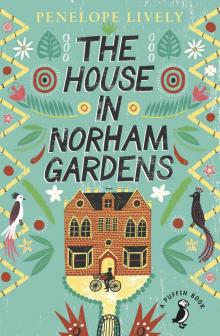 The House in Norham Gardens
The House in Norham Gardens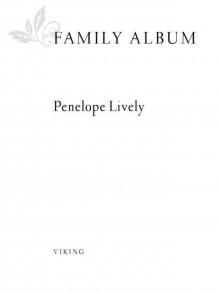 Family Album
Family Album Life in the Garden
Life in the Garden Oleander, Jacaranda: A Childhood Perceived
Oleander, Jacaranda: A Childhood Perceived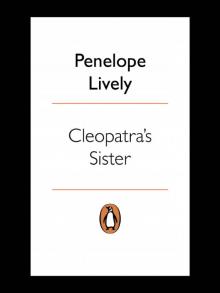 Cleopatra's Sister
Cleopatra's Sister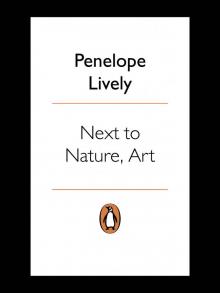 Next to Nature, Art
Next to Nature, Art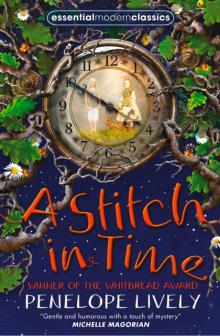 A Stitch in Time
A Stitch in Time Moon Tiger
Moon Tiger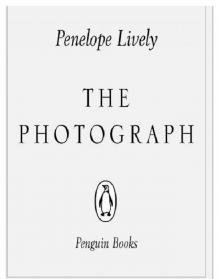 The Photograph
The Photograph Heat Wave
Heat Wave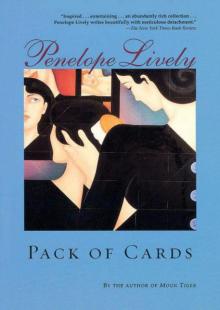 Pack of Cards
Pack of Cards Spiderweb
Spiderweb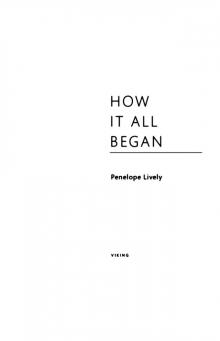 How It All Began
How It All Began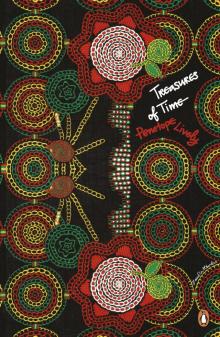 Treasures of Time
Treasures of Time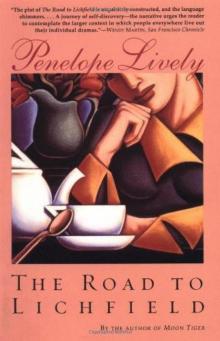 The Road to Lichfield
The Road to Lichfield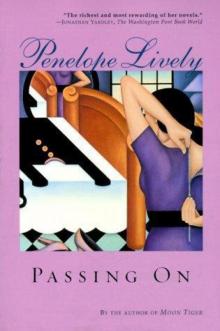 Passing On
Passing On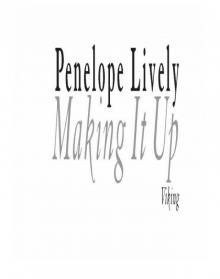 Making It Up
Making It Up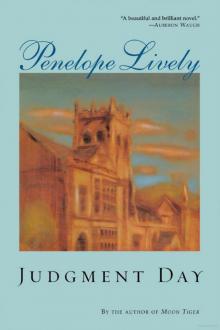 Judgment Day
Judgment Day The Purple Swamp Hen and Other Stories
The Purple Swamp Hen and Other Stories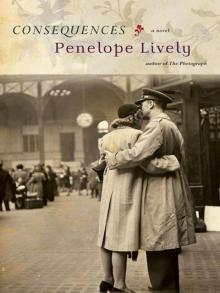 Consequences
Consequences *****Passing On*****
*****Passing On*****